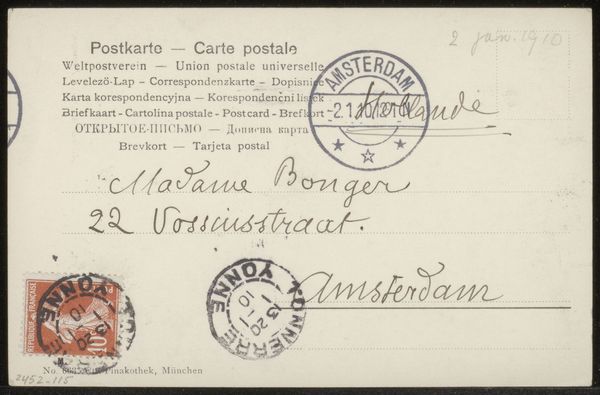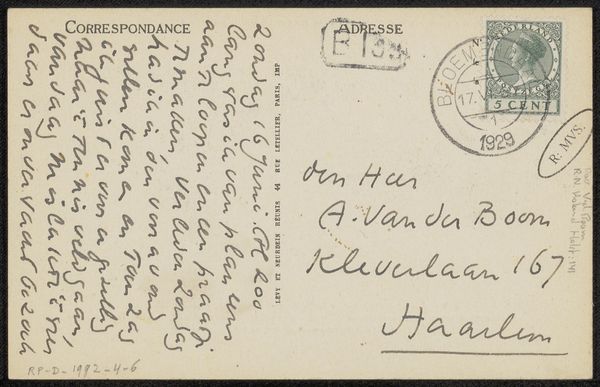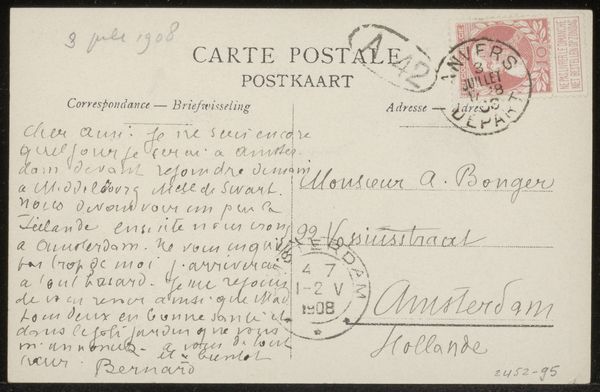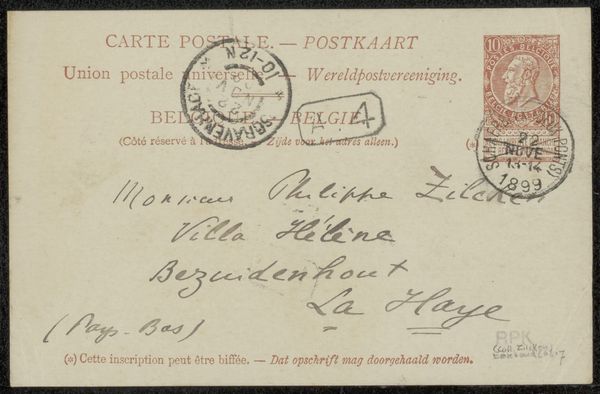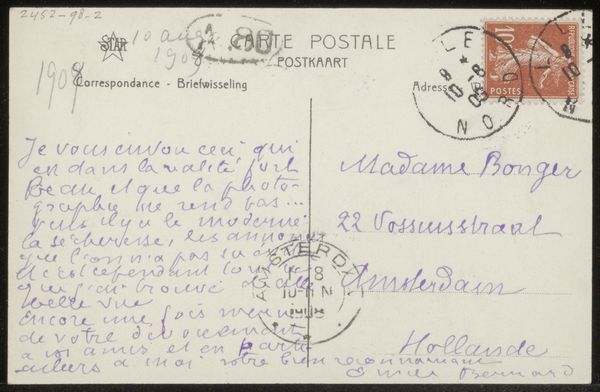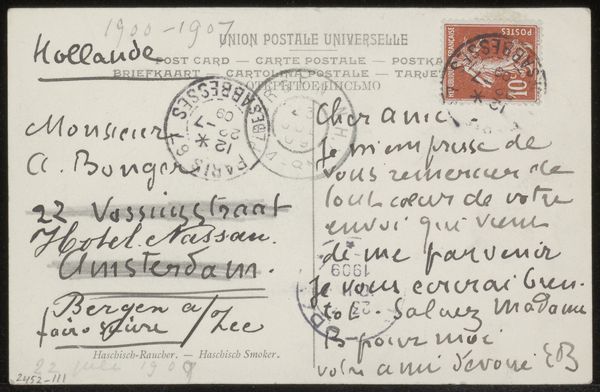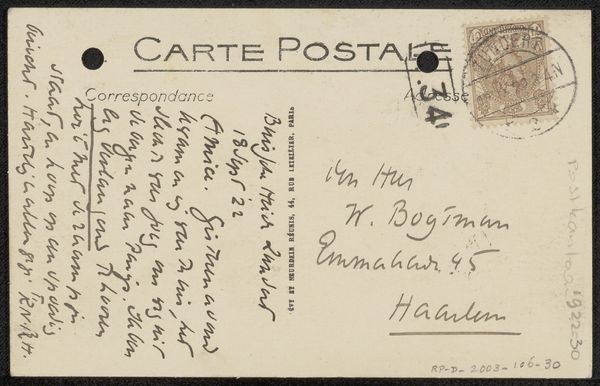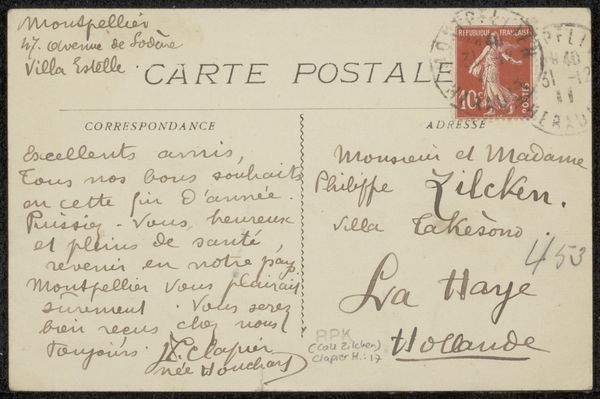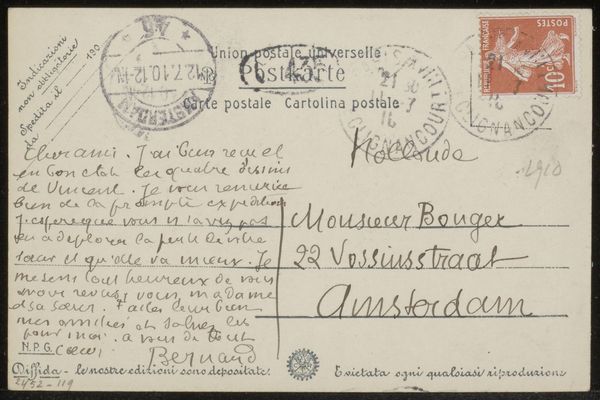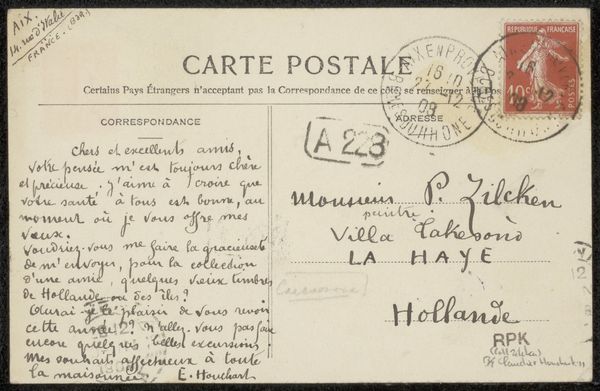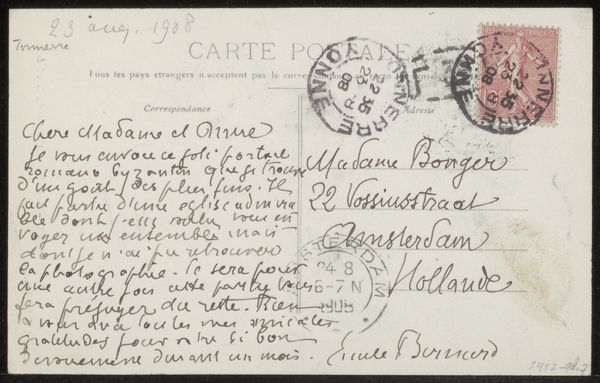
Prentbriefkaart aan Andries Bonger en Anne Marie Louise van der Linden before 1913
0:00
0:00
Copyright: Rijks Museum: Open Domain
Curator: At first glance, the composition feels quite balanced, despite the clear separation of the message on the left and the addressee's information on the right. The ink calligraphy appears dark against the card's pale surface, emphasizing the texture. Editor: What you're seeing is a postcard sent by Emile Bernard to Andries Bonger and Anne Marie Louise van der Linden, likely before 1913 given the postal stamp. It's rendered in ink, primarily functional as a communication tool, but also a material artifact that reflects postal systems of the time, its cost determined by distance and standardized international mail agreements. Curator: Indeed. There is a structural elegance even in its utilitarian design. Note the distribution of pictorial elements—the cancellation stamps—balanced by the formal stamp. It's a deceptively simple layout creating visual harmony. Editor: Don’t forget the social dynamic! The Boker family, Vincent’s confidantes and art collectors, and Bernard’s relationship to the market! This humble ink artwork carries a huge significance related to that era's trading practices, networking strategies, and artistic partnerships. Curator: Of course. Beyond its commercial aspects, Bernard's handwritten text contributes to its personal intimacy. Look at the curves and line quality in "E. Bernard," suggesting both casual familiarity and a cultivated aesthetic sensibility. Editor: Exactly. We see both intent and process. Paper sourcing from mills, ink mixtures affecting permanence, and distribution routes each tell different parts of its rich making and meaning— not solely the hand of a "genius". Curator: So, viewing this artwork we're considering not just what is aesthetically apparent, but considering what historical relationships it can embody, how simple materials were consciously organized, to subtly carry complex cultural meaning. Editor: Agreed. This examination reveals what simple exchange, made economically feasible and systematically reliable through material infrastructure and labour, had on interpersonal connection and on the early formation of modern art collecting.
Comments
No comments
Be the first to comment and join the conversation on the ultimate creative platform.
